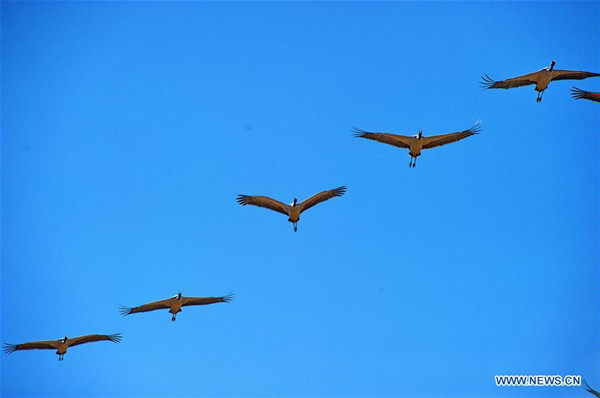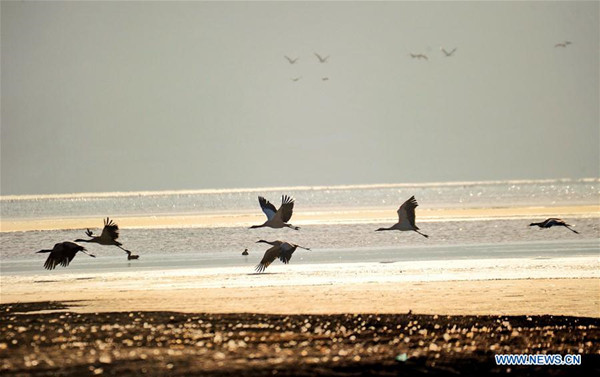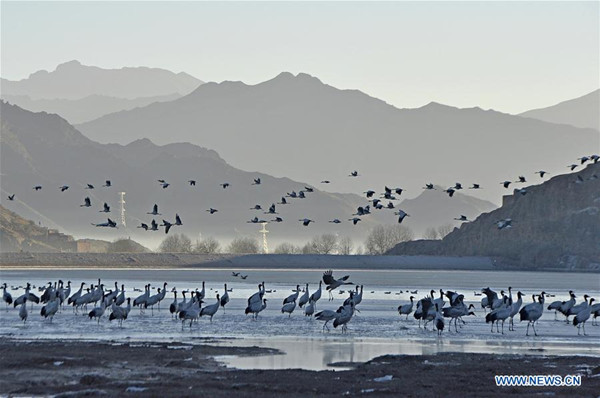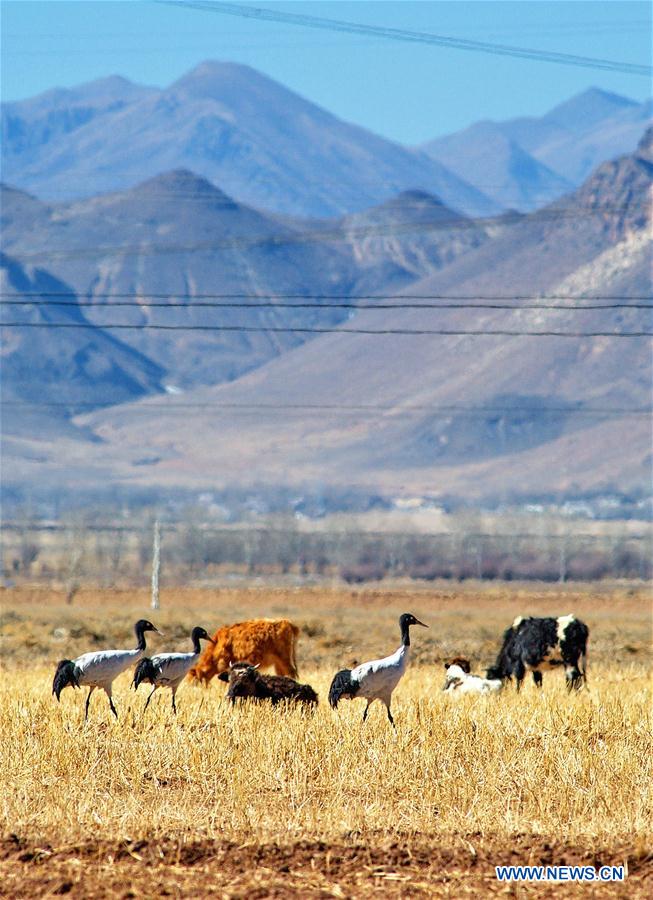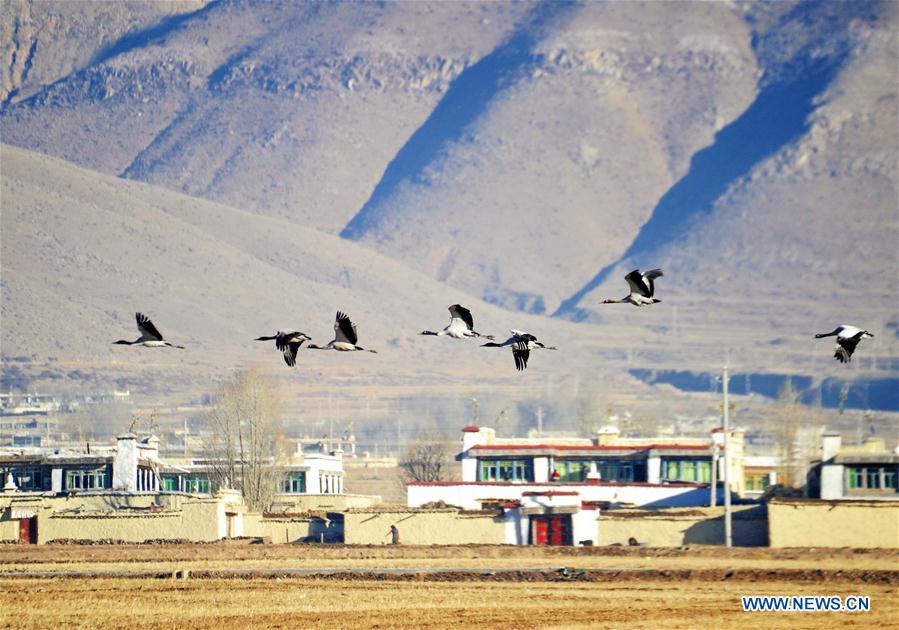Black-necked cranes are seen in a nature reserve in Linzhou County of Lhasa City, capital of southwest China's Tibet Autonomous Region, Jan. 15, 2017. Tibet has become the world's largest winter habitat for critically endangered black-necked cranes. It is currently temporary home to over 8,000 black-necked cranes, around 80 percent of the world's total population. (Xinhua/Zhang Rufeng)
Black-necked cranes are seen in a nature reserve in Linzhou County of Lhasa City, capital of southwest China's Tibet Autonomous Region, Jan. 15, 2017. Tibet has become the world's largest winter habitat for critically endangered black-necked cranes. It is currently temporary home to over 8,000 black-necked cranes, around 80 percent of the world's total population. (Xinhua/Zhang Rufeng)
Black-necked cranes are seen in a nature reserve in Linzhou County of Lhasa City, capital of southwest China's Tibet Autonomous Region, Jan. 15, 2017. Tibet has become the world's largest winter habitat for critically endangered black-necked cranes. It is currently temporary home to over 8,000 black-necked cranes, around 80 percent of the world's total population. (Xinhua/Zhang Rufeng)
Black-necked cranes are seen in a nature reserve in Linzhou County of Lhasa City, capital of southwest China's Tibet Autonomous Region, Jan. 15, 2017. Tibet has become the world's largest winter habitat for critically endangered black-necked cranes. It is currently temporary home to over 8,000 black-necked cranes, around 80 percent of the world's total population. (Xinhua/Zhang Rufeng)
Black-necked cranes are seen in a nature reserve in Linzhou County of Lhasa City, capital of southwest China's Tibet Autonomous Region, Jan. 15, 2017. Tibet has become the world's largest winter habitat for critically endangered black-necked cranes. It is currently temporary home to over 8,000 black-necked cranes, around 80 percent of the world's total population. (Xinhua/Zhang Rufeng)
Black-necked cranes are seen in a nature reserve in Linzhou County of Lhasa City, capital of southwest China's Tibet Autonomous Region, Jan. 15, 2017. Tibet has become the world's largest winter habitat for critically endangered black-necked cranes. It is currently temporary home to over 8,000 black-necked cranes, around 80 percent of the world's total population. (Xinhua/Zhang Rufeng)
Black-necked cranes are seen in a nature reserve in Linzhou County of Lhasa City, capital of southwest China's Tibet Autonomous Region, Jan. 15, 2017. Tibet has become the world's largest winter habitat for critically endangered black-necked cranes. It is currently temporary home to over 8,000 black-necked cranes, around 80 percent of the world's total population. (Xinhua/Zhang Rufeng)

Black-necked cranes are seen in a nature reserve in Linzhou County of Lhasa City, capital of southwest China's Tibet Autonomous Region, Jan. 15, 2017. Tibet has become the world's largest winter habitat for critically endangered black-necked cranes. It is currently temporary home to over 8,000 black-necked cranes, around 80 percent of the world's total population. (Xinhua/Zhang Rufeng)


















